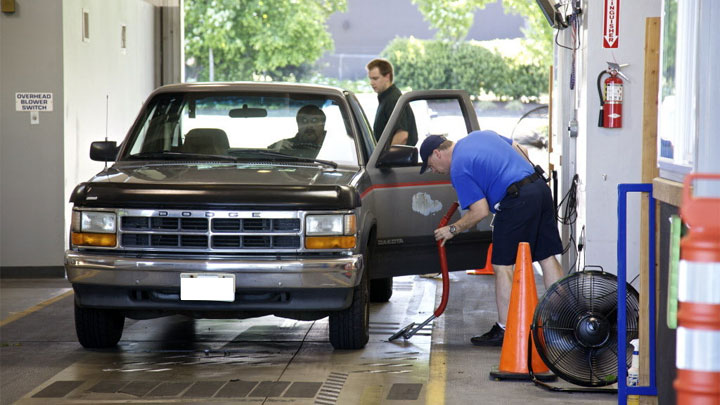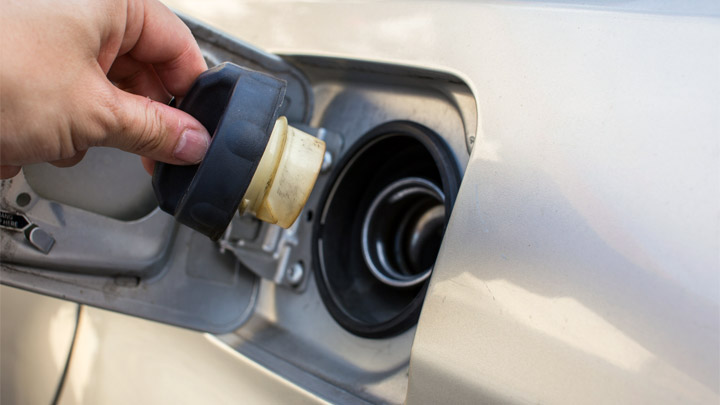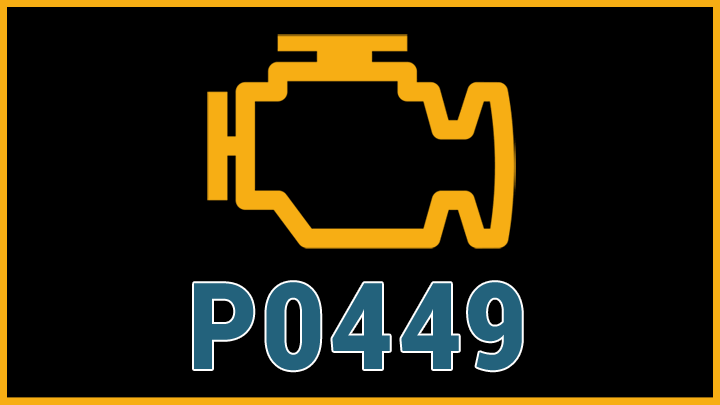Last Updated on August 22, 2022
When you’re driving down the road, the last thing you want to see is a check engine light. Sometimes a check engine light can indicate a big problem, while other times, it can indicate a minor issue that you can take care of yourself.
The good news is that with a bit of help, you can decipher and clear that code – especially if it’s a P0449. But what does a code P0449 mean, what causes it, and most importantly, how do you fix it? We’ll answer all those questions and more for you here.
What Does Code P0449 Mean?
Your vehicle’s emissions system consists of tons of vents, hoses, solenoids, and circuits to monitor and reduce the number of harmful emissions that your vehicle produces. But when those sensors and circuits detect a problem, you’re going to get a check engine code.
And that’s precisely what happened when you have a code P0499. The system has detected an imbalance in the system – and that imbalance is typically caused by the leak.
Related: P0442, P0453, P0455, P0456
Symptoms of Code P0449

A code P0449 is one of those rare engine codes that usually don’t have any additional symptoms besides the check engine light. Occasionally you’ll have a fuel odor accompanying a code P0449, but that depends on the exact cause of your particular engine code.
Usually, though, you won’t have any noticeable symptoms besides the check engine light. However, keep in mind that any emissions-related engine code will usually cause you to fail an emissions test. So, if you live in a state or county that requires an emissions test, you’ll need to repair this check engine light to keep your vehicle on the road.
- Check engine light
- A failed emission test
- No noticeable conditions
- Occasional fuel odor
Causes of Code P0449
While there aren’t many symptoms of a code P0449, there are tons of potential causes. By far, the most common cause is a missing or damaged fuel cap, but if you’re not that lucky, you’ll need to look around the rest of your vehicle to see if any other components are damaged.
Defective vent valves, fuel tank filler necks, EVAP hoses, carbon canisters, gaskets, and fuel tanks are all potential causes of code P0449. Since a code P0449 relates to a leak in the evaporation system, anywhere that fumes could be escaping is a potential cause.
- Missing fuel cap
- Defective evaporative vent valve
- Damaged fuel cap
- Damaged fuel tank filler neck
- Damaged EVAP hoses
- Defective fuel tank sending unit gasket/seal
- Damaged carbon canister
- Damaged fuel tank
Is Code P0449 Serious?
While you should take the time to address any check engine light, a code P0449 is among the least serious check engine lights you can have.
Not only is it usually pretty affordable to repair, but it typically doesn’t have adverse side effects if you put off repairs for a while. However, it’s best if you track down the exact cause of your code P0499 before putting off repairs to be safe.
Finally, keep in mind that having a check engine light on will prevent your vehicle from notifying you if a new problem emerges. So, while the code P0449 might not be serious, if a new code pops up that is serious – you might not find out about it until it’s too late.
How to Fix

A code P0449 is one of those few engine codes that you can usually spot the problem just by looking around – if you know what to look and know what you’re looking for.
Start by check the fuel cap. If it’s missing or incorrectly installed, that’s likely your problem. But even if you’ve correctly installed everything, take a look at the gasket – if it’s torn or damaged, you’ll need to fix it.
If everything on the fuel cap looks correct, it’s time to check out the system’s other components. If you can smell fuel, track it down to the source, and you’ve likely found your problem.
Otherwise, start with the simplest components to check. That’s usually EVAP hoses, which you can find in the engine bay. These are rubber hoses, and if they’re dry rotting, cracked, or otherwise damaged, that’s likely the problem.
From there, take a look at the fuel tank filler neck – it should be flush against the fuel tank – and it shouldn’t have any cracks or damage. Next, look around the fuel tank. If the tank itself is dented, cracked, or damaged, this might be your problem.
After you’ve ruled out all those components, you can move onto the problems that are a little tougher to spot, like a damaged carbon canister or a defective fuel sending unit or gasket. Start with the fuel sending unit.
If you can see that the gasket is fraying or damaged, that’s your problem. Also, feel around the gasket area when the engine is running (if you can do so safely). If you can feel air escaping the unit, it’s time to replace the gasket or seal.
If you can’t figure out what’s going on after checking all these problems – it’s time to consult a professional or use a diagnostic scan tool. Either way, you’ve either missed the exterior damage, or it’s not a problem that you can diagnose by simply looking at it.




